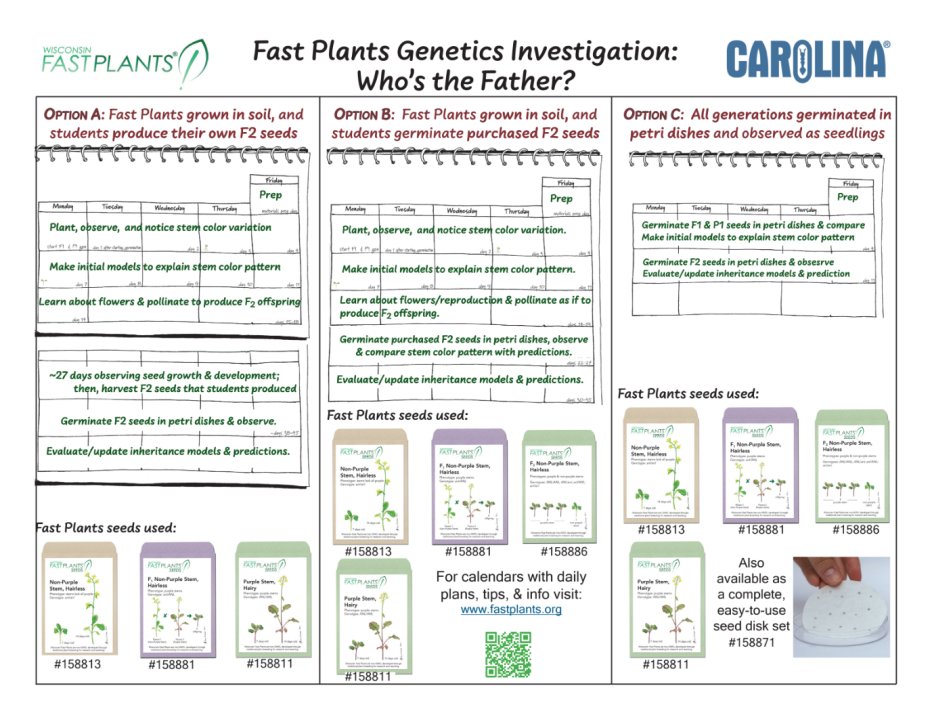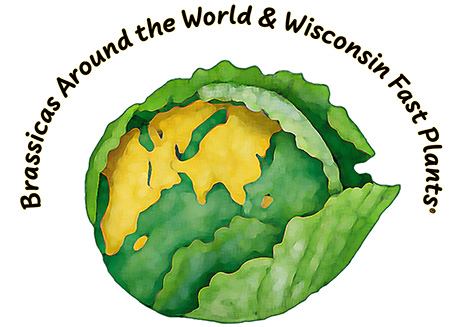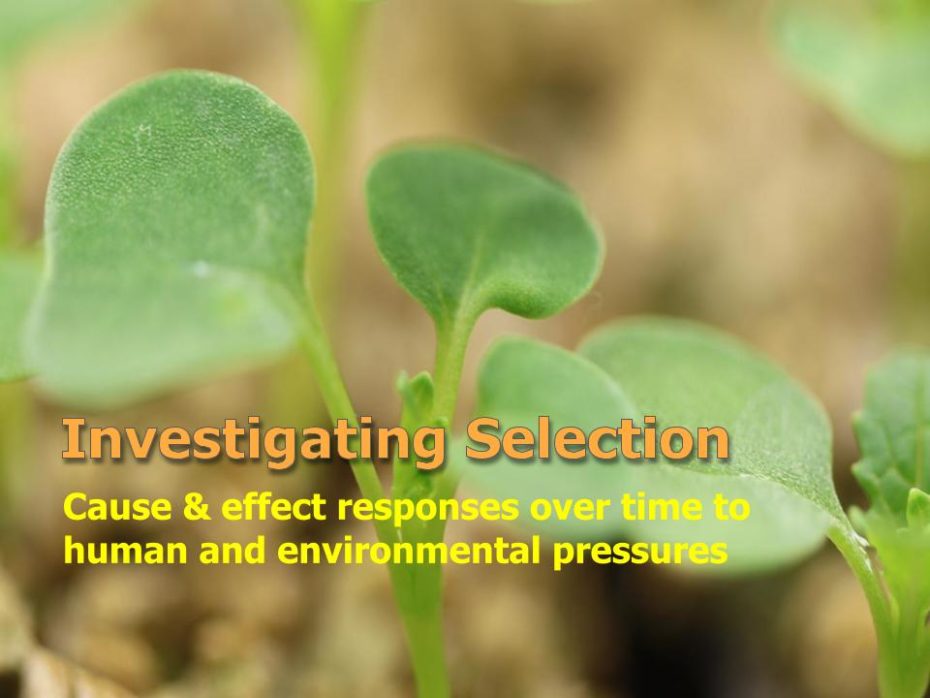Are you just deciding where to start to teach inheritance patterns with Fast Plants? Or maybe you’ve used Fast Plants before and are ready to add complexity to your inheritance investigations. Because we have so many resources available, choosing where to start can be a bit daunting. So, in this post we guide you through the decision making process and link to …
Dihybrid Inheritance Study Using Wisconsin Fast Plants – Open Source Educator Resources
Blog Post Sections Announcing Dihybrid Inheritance Study Teaching Tool Study and Resource Overview Dihybrid Inheritance versus Monohybrid Inheritance Patterns: Which to Choose? Identifying Traits Rosette-Dwarf and Anthocyaninless (Non-Purple) Study Timeline Learn More and Access Resources Announcing Dihybrid Inheritance Study Teaching Tool The Wisconsin Fast Plants team is proud to announce the release of a set of resources to support teaching …
Investigating Brassicas Around the World with Fast Plants – Open Source Lesson
Blog Post Sections Announcing Brassicas Around the World Lesson Hands-On Fast Plants Experiment Models Brassica Selection Around the World This Investigation is Ideal for… Connecting Science and Culture Relevance of Fast Plants and Brassicas Around the World Announcing Brassicas Around the World Lesson The Wisconsin Fast Plants team is proud to announce a revision and content overhaul to one of …
Seed Harvest – Identifying Mature Seeds
Producing Fast Plants seed for investigations that need offspring generations Seed harvest is an essential step in any Fast Plants experimental design that involves gathering evidence from offspring plants that students produce themselves. For example, you may have students conduct an inheritance investigation in which they inter-mate Fast Plants from an F1 generation to produce and observe the F2 offspring. …
Ecosystem dynamics investigations
Why hands-on ecosystem investigations? Ecosystems are highly complex systems; how can we support learners to grasp the effects on populations when one component of an ecosystem changes? Using a model ecosystem and model population in a hands-on investigation is an effective teaching strategy. In addition to making abstract ecosystem concepts more concrete, using Fast Plants as a model organism in …
New! Polycots Fast Plants Seed Line: Engaging & versatile for selection experiments
Polycot seedlings are easy to distinguish just a few days after germination! Our new Polycots seed line of Fast Plants features a trait that students can easily see at the seedling stage. In addition, we’ve developed a procedure for producing parental (Generation 1) and offspring (Generation 2) Polycot seed stocks, so it is not necessary for students to produce their own …
NEW! ExploreLearning releases Wisconsin Fast Plant® simulation Gizmos®
Two Wisconsin Fast Plants® simulation Gizmos® were created as a collaboration between ExploreLearning and the Wisconsin Fast Plants Program. These simulations were designed to support a variety of investigations and growing Fast Plants. AND they replace the simulations created nearly two decades ago that can no longer function on modern operating systems! Simulations complement physically growing Fast Plants Using these Gizmos during or after growing Fast Plants, …
Inheritance and Genetics: Observing Variation and Measuring Selection in Fast Plants
Variation is a fundamental attribute of life; understanding its nature is important to all. Wisconsin Fast Plants are an ideal model for teaching this concept, with easily observable variation in many plant traits. This variation can be observed, described, and measured or quantified to gain greater understanding of plant traits. Development of selection experiments allows analysis of recorded data and measuring …
Inheritance and Genetics: Understanding Patterns of Inheritance in Fast Plants
Wisconsin Fast Plants are an ideal model organism for observing and learning about inheritance patterns! Monohybrid and Dihybrid crosses demonstrate Mendelian patterns while other genetic stocks provide opportunity for observing cytoplasmic traits and developing of selection experiments. What inheritance patterns are observable in Fast Plants? Mendelian traits: monohybrid cross this investigation focuses on the genetics of the plant stem color trait Mendelian traits: dihybrid …
Counting Leaf Hairs on Fast Plants for Selection Experiments
Hairs are not often a trait that we associate with plants. However, of all the traits that students might observe in a population of Fast Plants, we can learn a lot about variation and natural selection by counting and selecting for the number of hairs on a leaf margin. Selective breeding to increase (or decrease) hairiness can provide an excellent opportunity …











